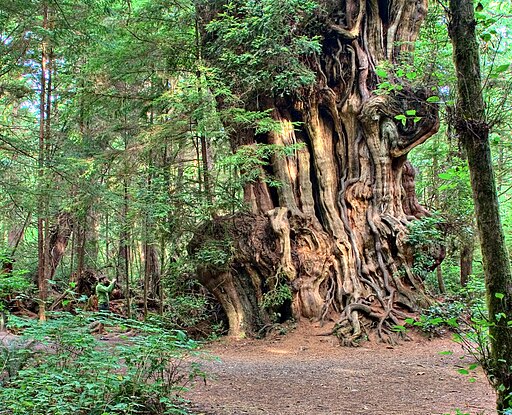🌳 Tree Details: The Thuja plicata, commonly known as the Western Red Cedar, is accurately described. It is an evergreen conifer with a pyramidal shape, known for its moderate to fast growth rate, rich green foliage, and aromatic wood.
🔬 Scientific Name: Thuja plicata, correctly noted, is part of the cypress family, distinct from true cedars in the pine family.
📏 Mature Spread: The mature spread of Thuja plicata can indeed range broadly, from 15 to 25 feet in cultivation, highlighting its adaptability and significant size potential under various conditions.
🌲 Where to Plant This Tree: Ideal conditions for Thuja plicata include moist, well-drained soils in full sun to partial shade. It’s crucial to account for its mature size and root system when planting, especially in relation to buildings, power lines, and underground utilities.
✨ Highlights: Thuja plicata is a towering species, often reaching great heights. Its wood is highly valued for its decay and insect resistance, which is attributable to natural fungicides like thujaplicins, making it ideal for outdoor construction and aromatic for essential oils.
🌞 Sun Preference: Prefers full sun to partial shade, requiring several hours of direct sunlight daily for optimal growth and health.
🌱 Soil Preference: Adapts to various soil types but thrives best in moist, fertile, and well-drained soils, with a slight preference for acidic to neutral pH levels.
🐾 Wildlife Value: Provides significant habitat and food for wildlife, with dense foliage offering nesting sites for birds and seeds serving as food for small mammals.
📖 History/Lore: Thuja plicata holds substantial cultural value for the indigenous peoples of the Pacific Northwest, utilized for totem poles, canoes, and ceremonial objects. Its common name, “cedar,” is a misnomer, as it is actually part of the cypress family.
https://www.victoriatrees.com/wp-content/uploads/2024/07/file-scaled.jpeg

